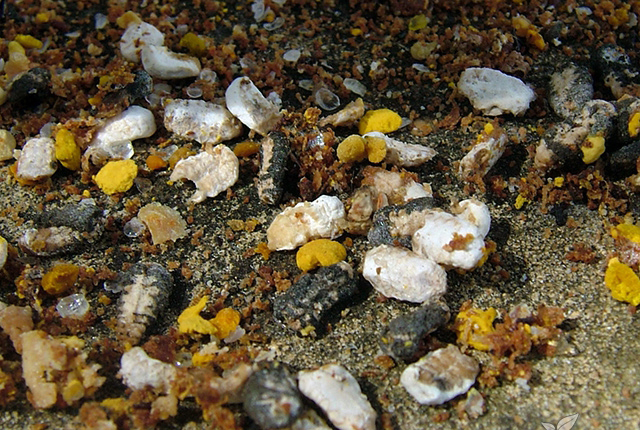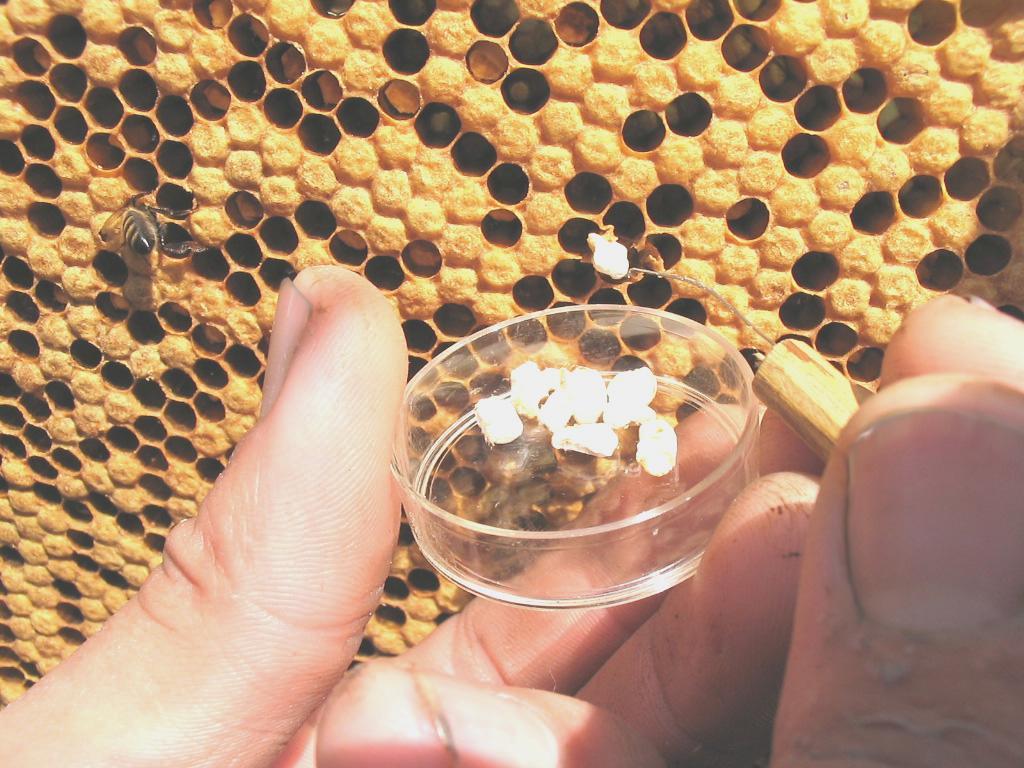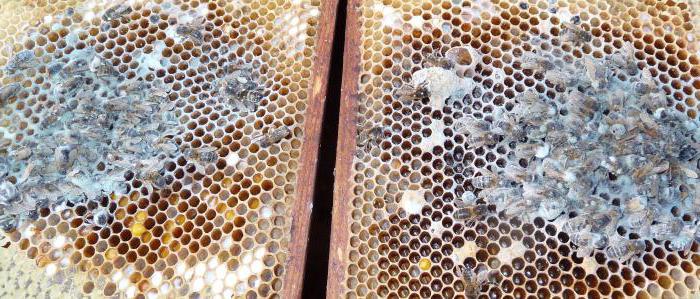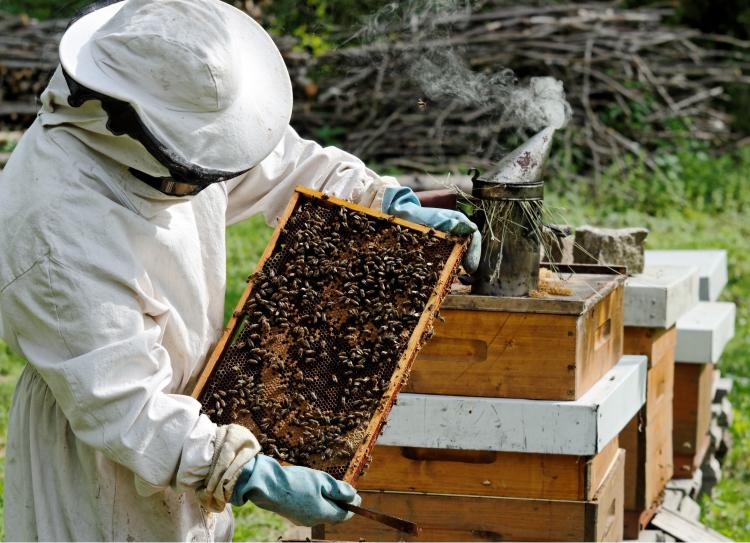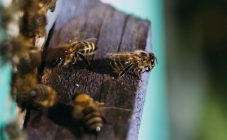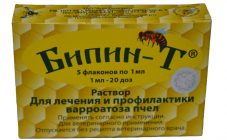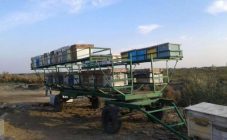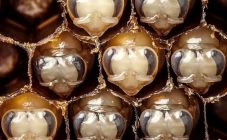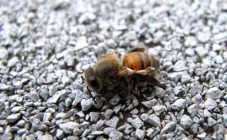Content:
Among the dangerous ailments that bee colonies sometimes suffer, ascospherosis stands out. This is an infection (mycosis) that kills insect larvae and pupae. Symptoms are pronounced. Even a novice beekeeper can recognize them. The disease usually appears in the spring. To prevent the spread of the disease, medications are used. Other names for the disease are chalk brood, pericystosis, calcareous brood.
About infection
Ascospherosis of bees is a mycosis that kills the young generation of Hymenoptera. Larvae and pupae of all types perish: workers, collectors, queens, drones. It doesn't matter if it's sealed or open. According to scientists observing the hives, usually three-day-old pupae die.
The fungus Ascosphaera apis is the cause of death of young animals. Its peculiarity is that it functions and grows only in living organisms. Getting into an egg, larva, pupa, Ascosphaera immediately finds the intestines of the victim. There apis settles and starts growing. The mycelium quickly fills the body of the future bee. The hyphae (thin filamentous processes that make up the mycelium) envelop the victim's internal organs and go out. In this case, the pupa swells to an enormous size. Its color changes to yellow.
After a while, the mycelium dries out. The body of the pupa or larva turns into a dry chip. The dead individuals resemble particles of chalk, lime or shells from ordinary seeds. Because of this, the disease was named calcareous, chalky brood.
Causes of the disease
As with humans, health problems in bees arise when the immune system is weakened. The most controversial time for insect families is spring (April, May). At this time, the first new larvae appear in the hive, some of which will later become honey collectors, another part - workers of the nest, others - drones and queens. The adults are carefully raised by the younger generation. The temperature in the area of the nest, where the brood is reared, is always at the level of 33-35 degrees. If the winter turned out to be difficult for the family, then by the spring the forces of the bees weaken. In addition, changeable spring weather disturbs the microclimate in the hive. These factors contribute to the development of the disease.
In addition, the causes of infection are considered:
- Increased dampness;
- Lack of high-quality insulation;
- Problems with ventilation in the dwelling of workers;
- Excessive disinfection of hives, use of antibiotics, acids.
All these factors provoke the development of morbidity, as they weaken the organisms of the Hymenoptera. However, in order for the ascospherosis of bees to appear in the nest, it must penetrate into it. The infection gets along with food, dirty equipment. Sometimes adult bees carry the pathogen. They can become infected by them when they are in greenhouses or pollinating flowers that have been treated with chemicals.
Symptoms
The apiary owner can easily detect pericystosis if he carefully examines the hives. If an open offspring died, then at the bottom of the house, next to the entrance and on the ground, dried pupae in the form of tiny lime mummies are found. This is the first symptom by which an Ascosphaera apis attack can be recognized.The remains are pulled out by female workers who are busy cleaning up the nest.
If mycosis has struck sealed individuals, then when you touch or shake the frame, the beekeeper hears a rattle. The sound is made by dried larvae, hitting the walls of the honeycomb. When an incision is made from the honeycomb, what remains of the developing bee easily falls out. Another sign of a problem is a whitish coating on the combs. At first glance, it can be mistaken for chalk marks.
Forms of ascospherosis
Three forms of mycosis are distinguished:
- Secretive;
- Lightweight;
- Acute or severe.
When secretive, the apiary owner may not even detect the problem. This form implies isolated cases of infection. Mycosis, affecting one individual, disappears by itself. This situation is observed in strong families with strong immunity. The worker bees carry the chrysalis mummy outside the house and with it remove all the remains of the mushroom. Treatment of bees from ascospherosis in this case is not at all necessary.
The lighter form represents minimal losses of brood (10-30 individuals). It is not easy to notice the disease in this form. However, it is the lightweight form that allows you to cure the hive with simple means.
The severe form is noted when 30% of the brood dies.
Treatment
Preparing for treatment
In acute form, the beekeeper organizes the removal of the frames on which mycosis is visible. The house is being renovated as much as possible. New ready-made sushi, sheets of foundation are placed inside. It is recommended to replace the uterus with a new one. You can also move the family to a new sanitized hive.
Medicines
Apiary owners ask themselves the question "how to treat lime brood in bees?" Veterinarians can help them. The doctor is invited to inspect the hives. The specialist evaluates the condition of the families and prescribes treatment based on the form of mycosis. In severe cases, medications against fungal infections are prescribed.
These medicines include:
- Apiask;
- Unisan;
- Nystatin;
- Askosan;
- Ascocin, etc.
Each drug has its own characteristics.
Apiask comes in the form of clotrimazole strips. The cardboard boxes are placed in the house. One strip is for 5 frames. This product must not be used while honey bees are collecting. Families can only be treated with Apiask in the spring or after the honey is pumped out.
Unisan is suitable for thrifty owners. The agent in an amount of 1 ml is placed in a jar of warm water (volume - 0.5 l). The solution is poured into a spray bottle and frames with honeycombs are processed.
Nystatin comes in tablet form. They are mixed with sweet powder and dusted on the honeycomb. It is necessary to mix another drug with powdered sugar - Askosan.
Ascocin is a liquid that is mixed with very sweet water. The frames are sprayed with this solution so that the bees eat the medicine.
Traditional methods
Treatment of bees from ascospherosis, which has a lightweight form, can be organized with the help of some plants. For example, an effective folk method is garlic porridge. Several heads of garlic are wrapped in cheesecloth, then choke. The resulting mixture is placed directly in the gauze in the position of the hive. It is necessary to change the gauze roll every 5-8 days.
Despite the fact that ascospherosis of bees affects only the brood, the whole family suffers from the fungus. The number of individuals decreases, new ones do not appear. As a result, work in the nest slows down or stops altogether. For families to be strong and healthy, a person must provide them with everything they need. It is especially worth paying attention to high-quality insulation of houses. It is better to locate the apiary on a hill so that with the arrival of spring the hives are warmed by the rays of the sun.
